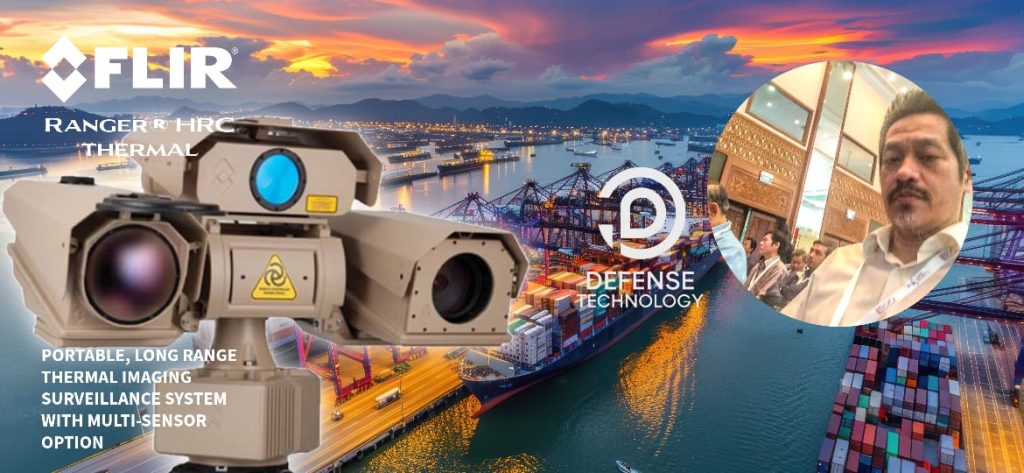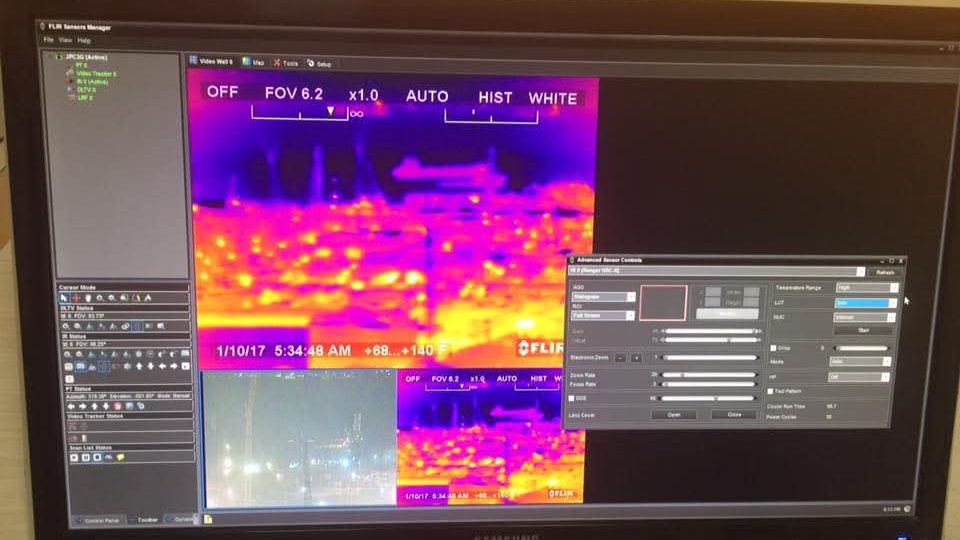
The Camera Thermal Control module enables remote operation, video streaming, and event management of FLIR thermal imaging systems—such as the FLIR Ranger® HRC—through the Nexus SDK. Designed for maritime and tactical environments, this module provides precise sensor control and reliable system integration.
Core Features
- Network Discovery
Scans and identifies all connected FLIR thermal cameras on the network usingnexussdk.dll, enabling fast setup and dynamic detection in multi-camera environments. - Pan-Tilt-Zoom (PTZ) Control
Enables precise remote control of camera movement, zoom, and focus. Supports joystick input, preset recall, and patrol modes for tactical coverage. - Live Video & Sensor Streaming
Provides real-time access to thermal video via RTSP or proprietary formats. Supports integration into surveillance systems, ECDIS displays, or mission consoles. - Thermal Event & Alarm Handling
Monitors camera-triggered events such as motion detection, heat anomalies, and zone breaches. Allows automated alerts or system-level responses. - Multi-Camera Management
Centralized control of multiple units with features like grouped presets, synchronized viewing, and integration with radar or AIS for auto-tracking. - Developer Integration with FLIR Nexus SDK
Supports native C/C++ development vianexussdk.libandnexussdk.dll, exposing control functions, video handling, diagnostics, and Pelco/TCP command support.

Integration Architecture – Camera Thermal Control
- SDK-Based Control Layer
The system communicates with FLIR thermal cameras through the Nexus SDK, which provides native C/C++ functions vianexussdk.dll. This layer handles device discovery, control commands, video stream access, and sensor data retrieval. - Modular Communication Protocols
Supports multiple communication standards including TCP/IP, Pelco-D, and proprietary FLIR protocols. Ensures compatibility with a wide range of command and video distribution platforms. - Video Stream Integration
RTSP or encoded video streams are routed through internal video decoders or third-party display systems (e.g., ECDIS, video wall, browser UI). Stream management can be scaled for single or multi-camera views. - Event Processing & Alarm Routing
Events triggered by the thermal camera (motion, intrusion, temperature thresholds) are routed to a monitoring engine. Actions can be configured to trigger alerts, reposition cameras, or activate other system components. - Sensor Fusion Layer (Optional)
The system can integrate with external sources such as radar (ARPA), AIS targets, or EO/IR feeds. This allows features like “slew-to-cue,” where the camera automatically turns to focus on a target identified by another sensor. - Application & UI Layer
A front-end application (desktop or web-based) enables user interaction. It visualizes the camera feeds, status indicators, PTZ controls, map overlays, and system events—all customizable through the UI logic.